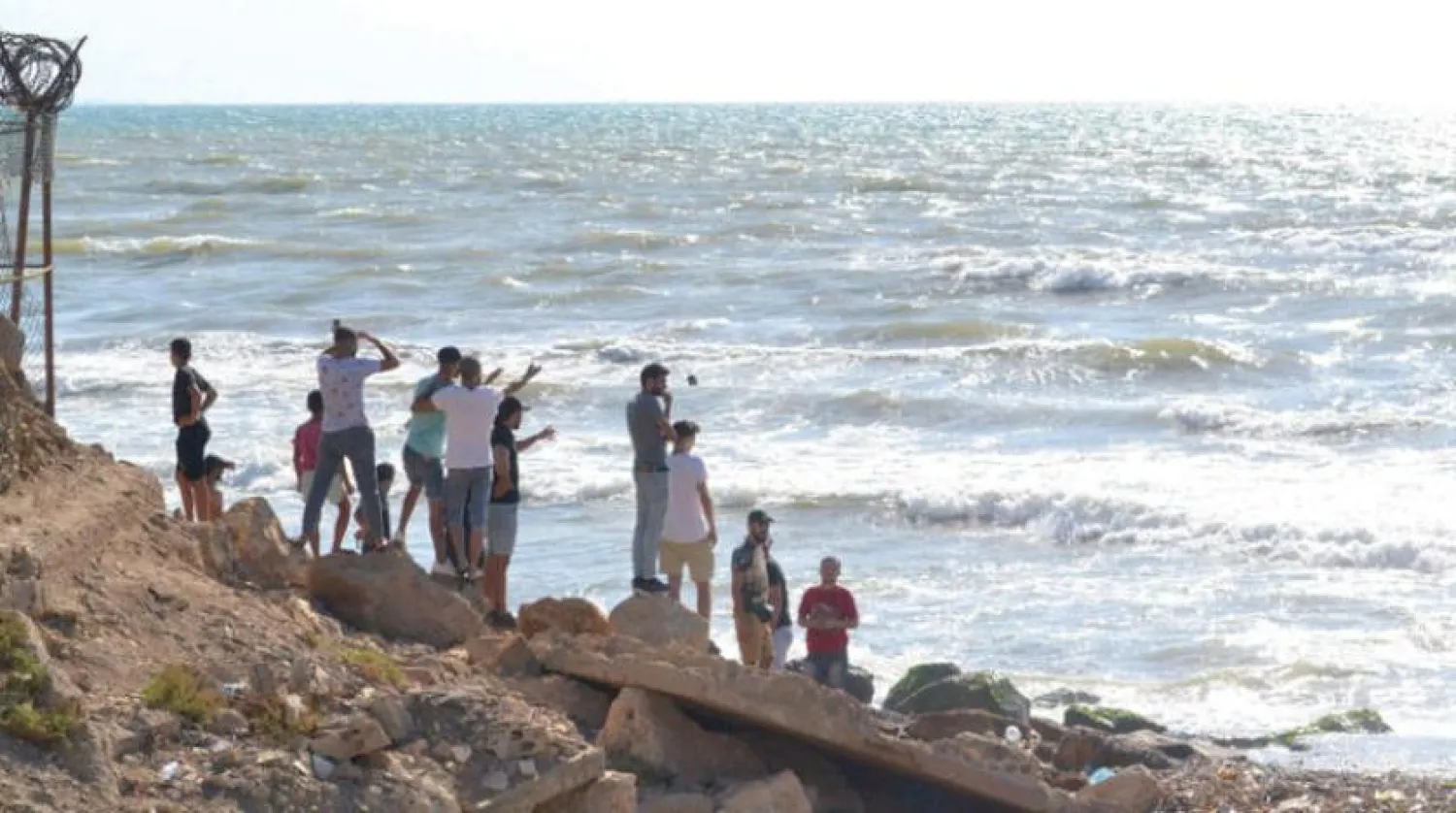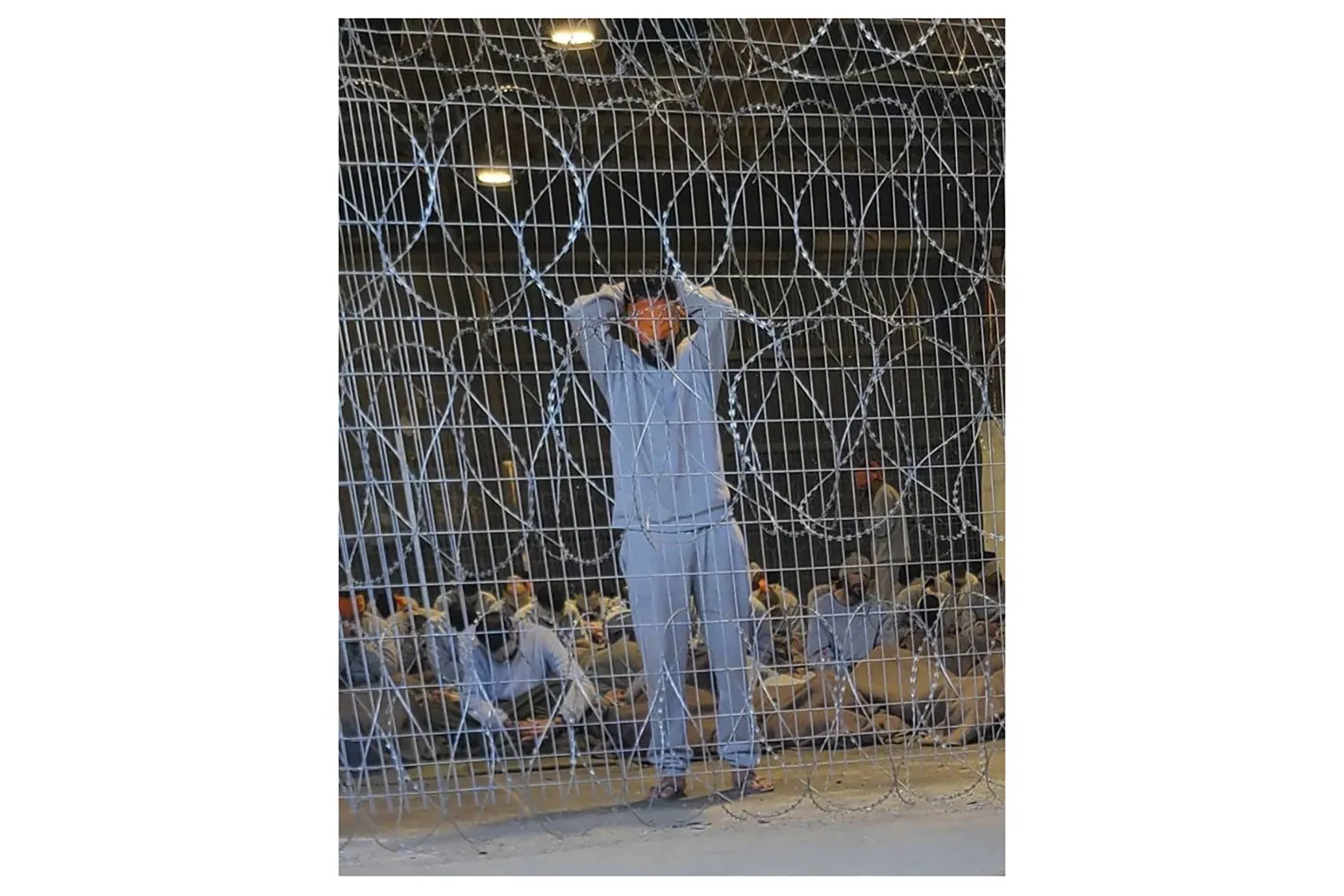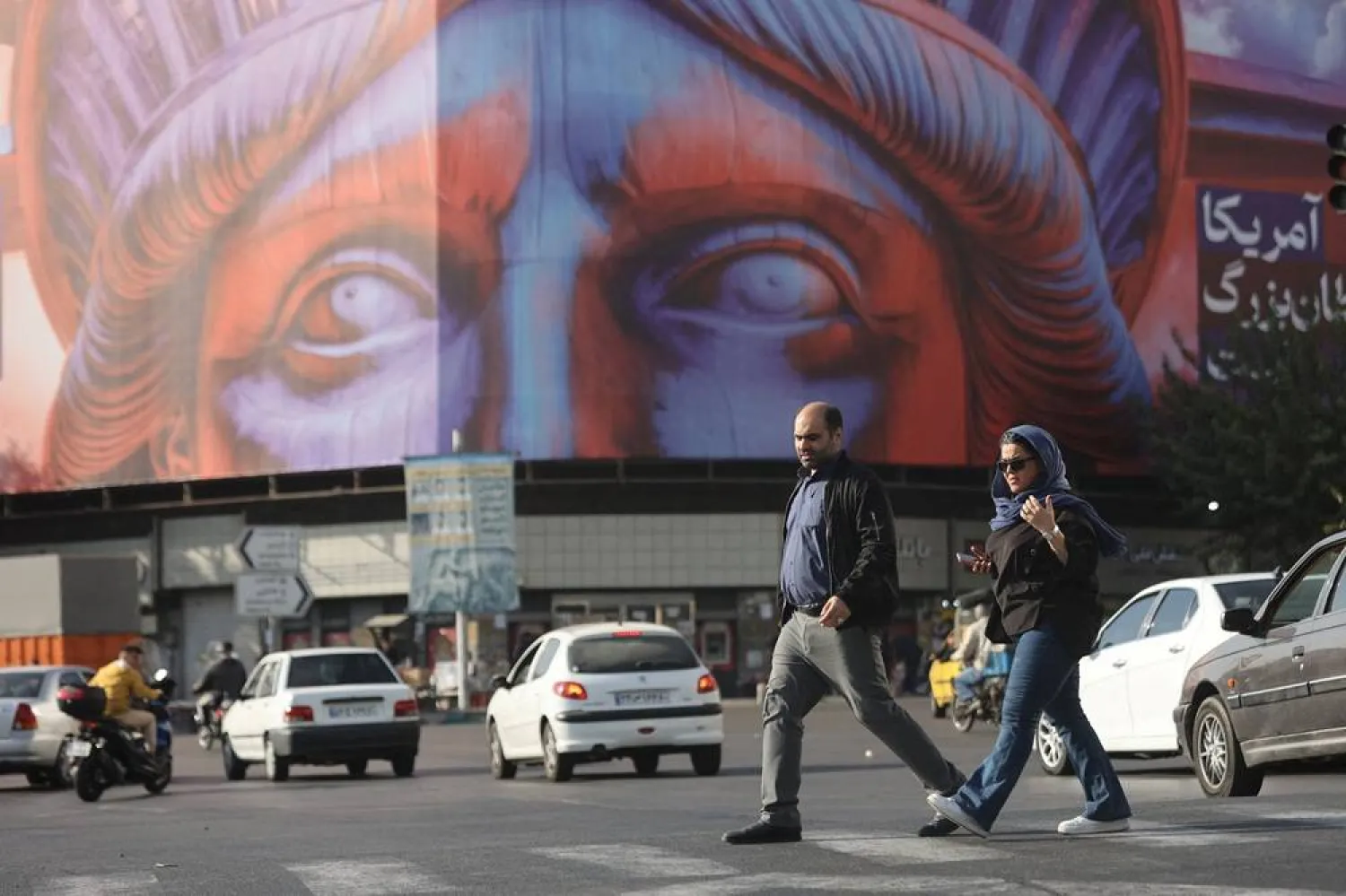Lebanon had transformed in the past two years into a platform for the departure of migrants to Europe. Over 85 journeys left the country in 2022 alone.
A Lebanese security source said the smuggling operations existed before the crisis that has been engulfing the country since 2019, but they have risen dramatically since.
Thousands of migrants from Lebanon and Syria and Palestinians have been literally throwing themselves in the sea in a gamble to reach Europe where they dream of leading a better life.
Travelers from 38 boats managed to reach European shores in 2021, while 46 have failed. Tragedy has also struck, taking hundreds of migrants to the bottom of the sea.
The Lebanese army has dedicated a unit to crack down on human traffickers. They collect the testimonies of smugglers and escapees to help them draw the complete picture of how the illicit operations take place along the Lebanese shore.
A Lebanese security source drew a bleak picture of despair to Asharq Al-Awsat. He spoke of how people were willing to risk their lives and that of their children to take the dangerous journey at sea. He also spoke of the greed of smugglers who recklessly risk the lives of people for a handful of dollars, which the migrants often collect by selling everything they own to pay for the perilous journey.
Italy is the destination of all these journeys.
Why Italy?
The source said: “Yes, the journey to Italy is longer, more difficult and more dangerous, compared to Cyprus, which can be seen by the naked eye from Lebanon.”
Lebanon and Cyprus have signed an agreement to prevent the smuggling of people from Lebanon, so that country has been ruled out by traffickers.
Greece, which is also close to Lebanon, has also been ruled out because its authorities have been brutally cracking down on migrant boats.
Italy, however, helps migrants and provides them with essentials, such as food and medical treatment, as soon as they arrive on its shores. Moreover, it does not detain the migrants, but rather allows them to roam the country and enter other parts of Europe until judicial rulings are issued.
The journey to Italy takes around eight to ten days, depending on the weather. It could take even longer if the boat is forced to maneuver around Cypriot or Greek patrols. At times, the boat may be forced to remain moored at sea for days.
Once the boat reaches regional waters, the captain would turn on the GPS and satellite telephones to call for rescue from the Italian coastguard. Once the message is received, the captain then begins to sink the vessel to destroy any evidence that gives away where the trip departed from.
Everyone onboard the boat then jumps into the sea to await the coastguard that takes them to dedicated gathering spots.
The migrants then refuse to present any identification papers, forcing Italian authorities to give them two options: Submit an asylum request in Italy or face a deadline to leave the country.
The second option is often chosen by the majority of the migrants, who have relatives or friends in other European countries, where they would choose to settle down with their help.
Smuggling scenario
The area stretching from Tripoli’s shores to the al-Abde at the border with Syria is chosen arena of the smugglers.
The smuggling operation begins with a “contractor” of sorts who gathers the travelers and agrees with them on the details of the trip and the payment that is made in installments. The first is an advance payment and the last is given to the smuggler in Lebanon through relatives or people trusted by the migrants and smuggler after the travelers reach Europe.
A passenger is charged between 4,000 and 5,000 dollars, but special prices are offered to families and groups. Discounts are offered to children, which only leads to more of them being placed in the boats.
The desperate migrants often sell their homes, gold, or properties to pay for the dangerous journey. If it is a failure, then they are left with nothing.
Passengers revealed that they have had to stay in the town of Bebnin on the eve of their journey. Their stay there is a boon for the residents. The town has become the destination of passengers from Lebanon and Syria as well.
This has led to cooperation between smugglers from Syria and those operating the migrant boats.
Rawan al-Mane, the relative of victim Mustafa Misto, said her cousin was convinced of embarking on the journey by a friend, who turned out to be close to major smuggler, Bilal Nadim Deeb.
Mustafa took out loans to pay 5,000 dollars per migrant and 5,000 dollars for his three children.
In the meantime, the smuggler would have completed the purchase of a fishing boat that will be used for the journey. The cost ranges between 35,000 and 50,000 dollars. The boat that recently sank off Syria’s Tartus cost 36,000 dollars.
The smuggler then transfers the ownership to one of the travelers, who would be granted a discount on the journey. The owner of the vessel is often pursued by judicial authorities once the trip is discovered, therefore allowing the smuggler to “remain out of the picture.”
The boat then leaves the fishing port legally. The necessary documents and identity of the sailor are verified by the security forces. Finding nothing suspicious, such as large amounts of fuel, life jackets and food, the vessel is allowed to leave.
The necessities for the journey are loaded later. They are first stored at houses that are located along the shore and their owners, of course, ask for a fee for keeping them.
The migrants are gathered in small boats dotted off the shore to avoid raising suspicions. They often do not carry any luggage, just a few bags or backpacks, meaning they could pass as regular boat passengers.
Once the migrant boat arrives, the surprises eventually begin to arise. The number of passengers often exceeds the capacity of the boat.
A boat usually has the capacity to hold 20 people, while an agreement would have been reached to load it with 50. But once the migrants are collected, the number would have crossed that figure by miles. The ill-fated boat that sank off Tartus carried over 125 people.
The boat “crew” consists of the captain, his assistant, mechanic and medic. Relatives and friends of the “crew” could take advantage of their connections and also join the journey. Rounding out the numbers are the migrants themselves.
The greater the load in the boat, the greater the danger. The weather only increases the risks and when a storm strikes, so does tragedy. Other factors that jeopardize the journey include the poor experience of the captain and his assistants and the greed of the smugglers.
The Lebanese army has been trying to crack down on smuggling throughout the year despite limited means. The security source said 46 operations were thwarted in 2022, while 38 made the journey. Two boat sinkings were reported. One vessel was rescued after suffering a malfunction at sea.
Lebanese authorities have largely managed to uncover the smuggling networks and are working on breaking them up as much as possible.
Bebnin used to be a fishing town, but the spike in smuggling has shifted the focus of the residents. Entire families are now involved in smuggling and trafficking.
The brother of detained smuggler, Bilal Deeb, also took up smuggling and headed one trafficking network. He embarked on a journey at sea with his family and is now living in Europe.









